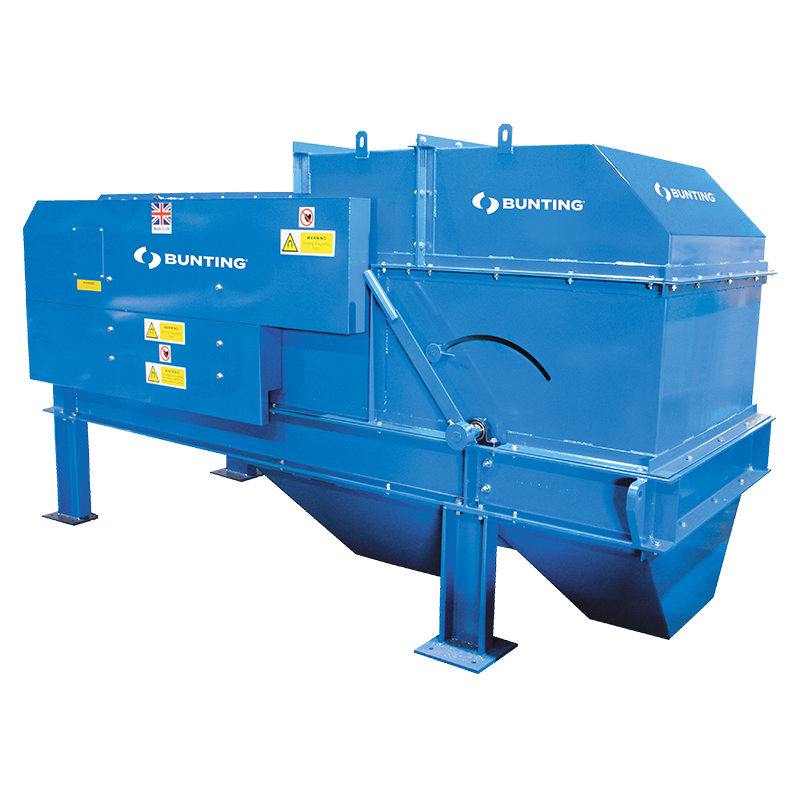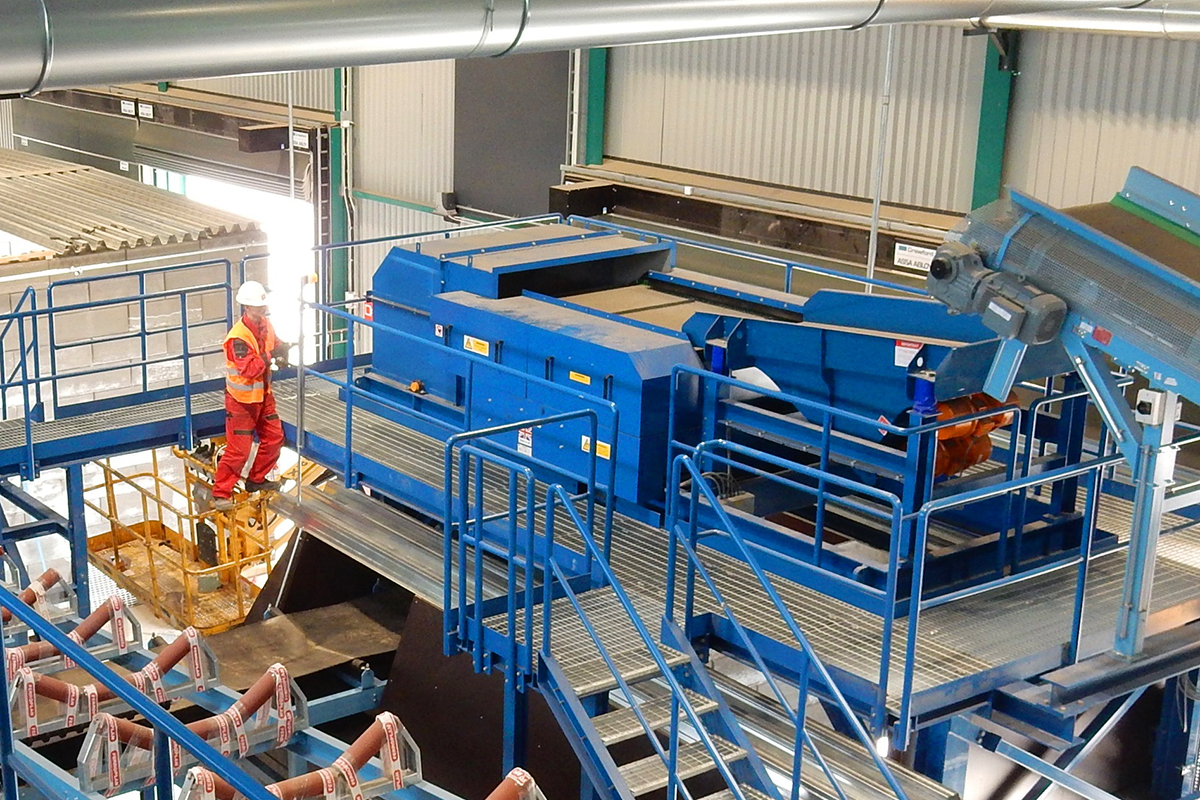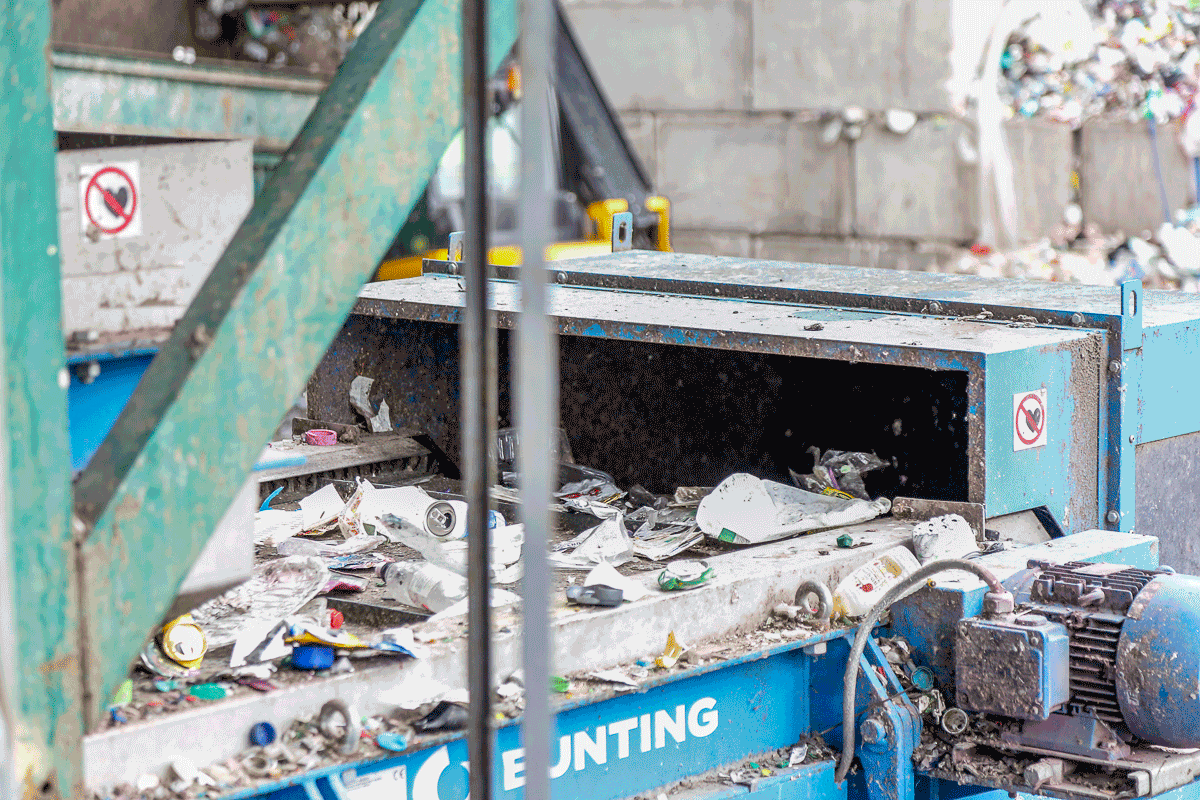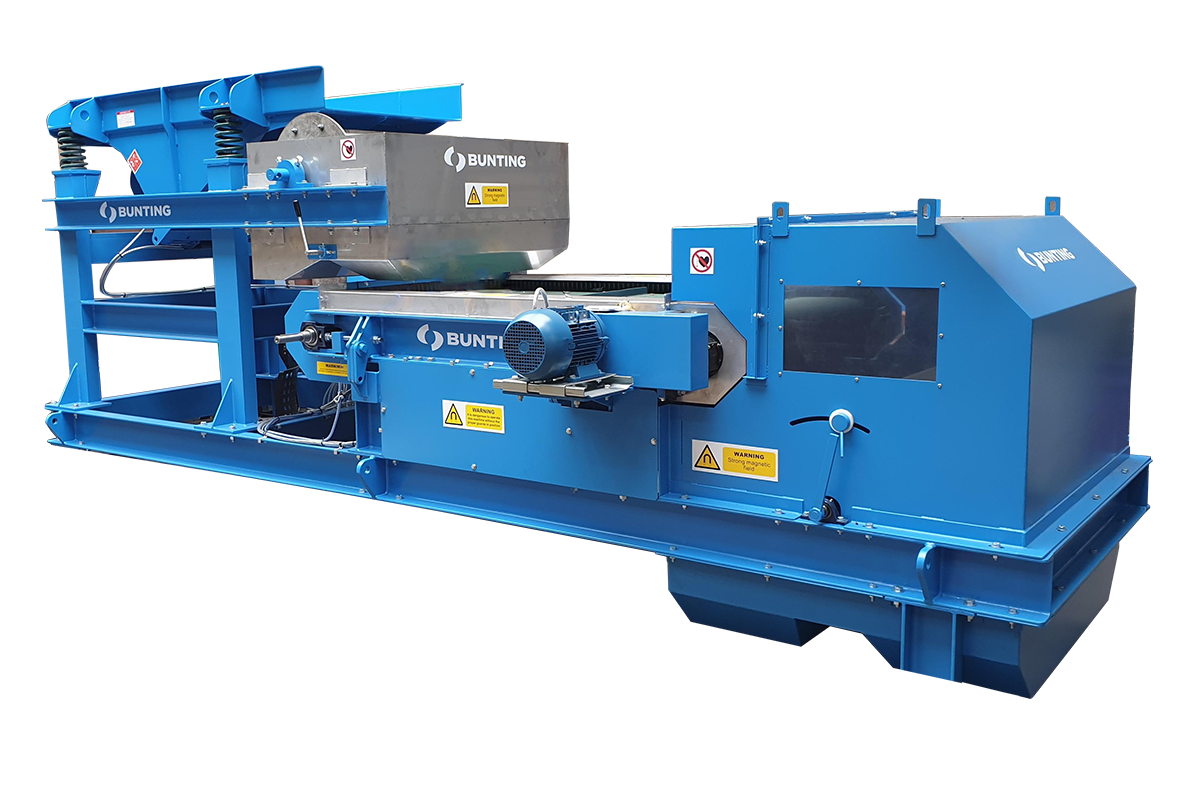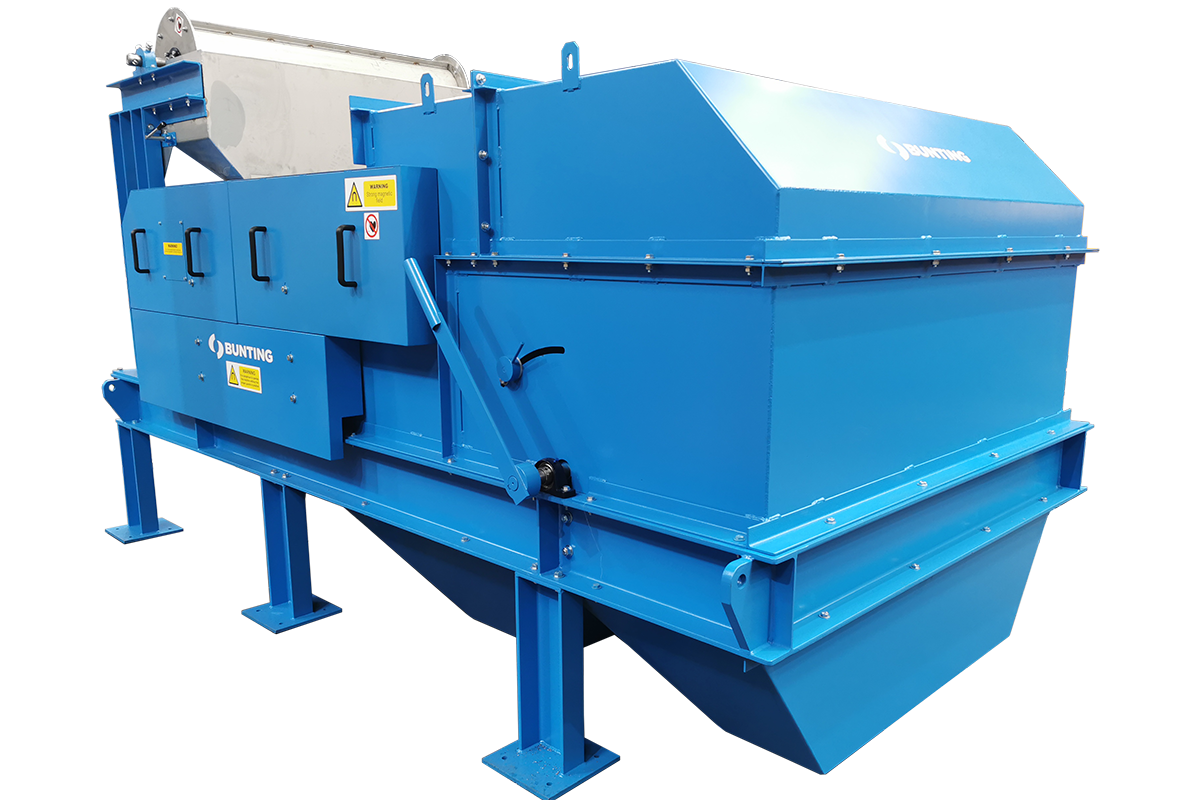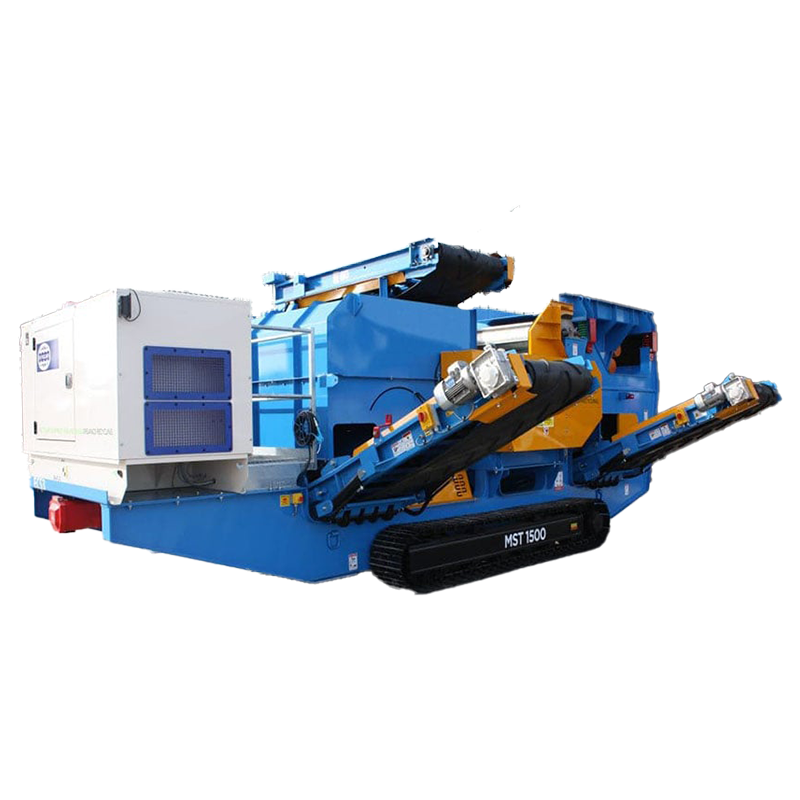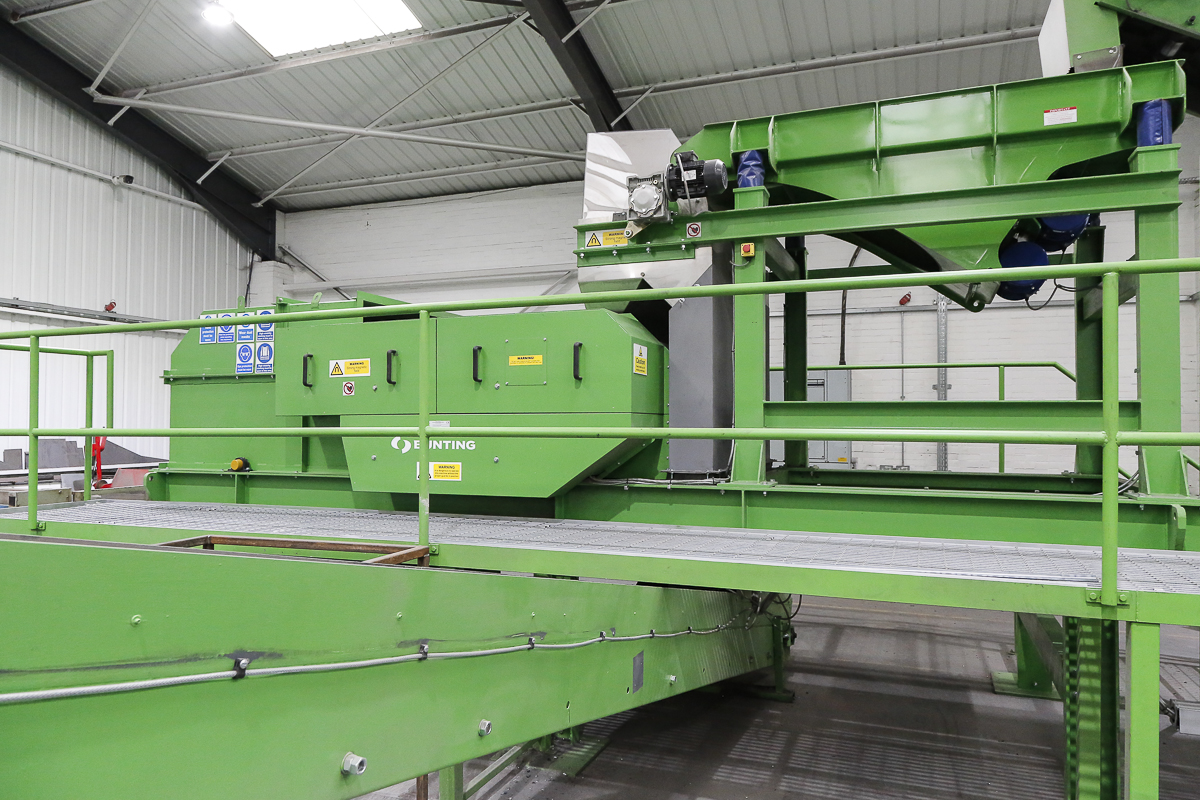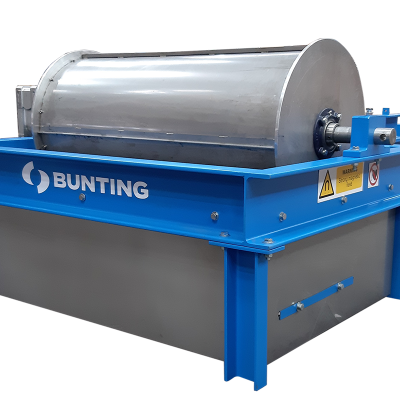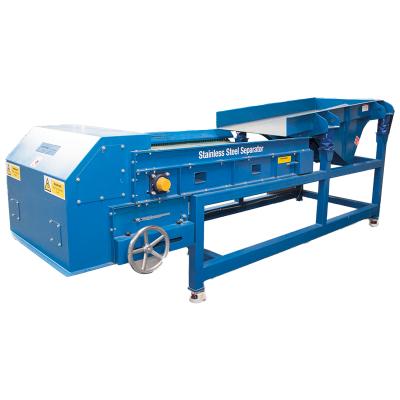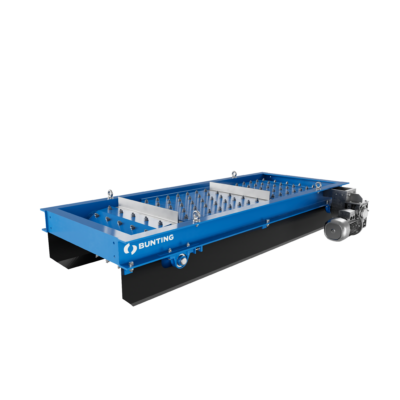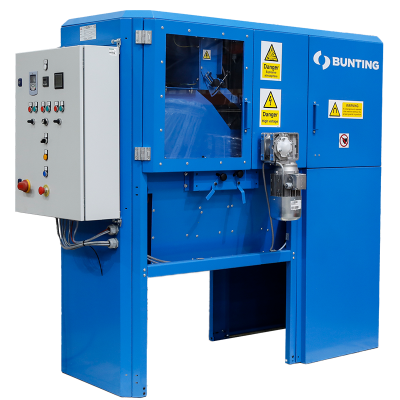Eddy Current Separators
The Eddy Current Separator is used widely in the recycling industry to either recover or remove non-ferrous metals from non-metallic materials. Different designs enable the separation of small (down to 3mm) and large non-ferrous metals.
Bunting’s range of eddy current separators include both concentric and eccentric rotor designs that have evolved over a 30 years period of manufacture and supply. The range also includes laboratory-scale eddy current separators, examples of which are located in the UK Recycling Test Facility.
Description
The Eddy Current Separator (ECS) utilises magnetic forces to physically repel non-ferrous metals and enables separation from non-conductive materials. The eddy current separator is often supplied as part of a metal separation module with a first-stage drum magnet removing ferrous metals.
To maximise the separation and recovery of non-ferrous metals, Bunting has developed four different eddy current separator models:
- High-Intensity Eccentric (HIE) ECS – for small non-ferrous metals down to 3mm;
- High-Intensity Concentric (HIC) ECS – for small non-ferrous metals down to 10mm;
- R Type ECS – for general recycling applications where non-ferrous metals are above 20mm
- Can Sorter (CS) ECS – A cost-efficient model designed specifically for the recovery of aluminium cans;
Eddy Current Separators commonly form part of a Metal Separation Module as a two-stage metal separator. Material initially passes over a Permanent Drum Magnet to remove and recover ferrous metals, leaving a non-magnetic fraction. The Eddy Current Separator then separates non-ferrous metals from the non-conductive remains.
Related blogs
- Maximising Non-Ferrous Metal Separation
- Lab Equipment For University of Birmingham
- Recycling Test Facility
Operation
An eddy current separator is a dual pulley conveyor system, where the non-metallic rotor cover houses an independently rotating high-speed magnetic rotor. Separation occurs when a non-ferrous metal particle (e.g. aluminium, copper or zinc) is conveyed into the magnetic zone. The non-ferrous metal particle is exposed to rapidly changing magnetic polarity. This induces ‘eddy currents’ into the particle generating an electrical current (Fleming’s left-hand rule) that subsequently creates its own magnetic field. The two magnetic fields oppose each other (i.e. North vs North pole repulsion), causing the repulsion of the non-ferrous metal particle and change in trajectory. The measured positioning of a splitter enables the separation of non-ferrous metals from non-metallic material due to the altered and unaltered material trajectories.
The speed of the magnetic rotor is dependent on the number of poles on the magnetic rotor and the application.
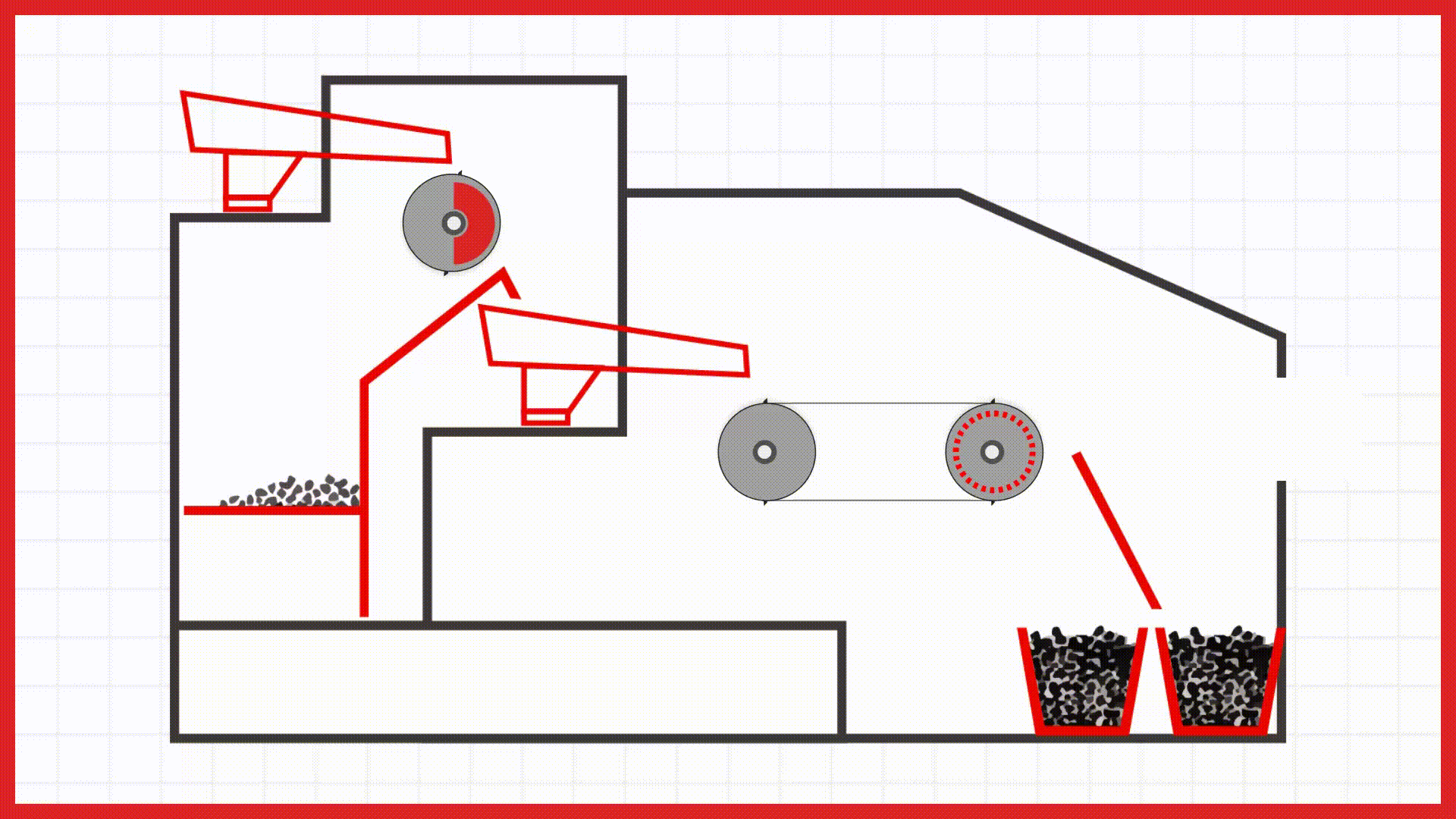
Quick Belt Change Design
To limit production downtime, the model HIC eddy current separator design enables the swift changing of the main conveyor belt. The HIC eddy current separator features a cantilever jacking system fitted beneath the hinge mechanism on the frame. After removing the side guards and the drive belts on the rotor motor, the jacking system lifts and then holds the conveyor from one side. This allows the belt to be easily and simply slipped onto the pulleys. This significantly reduces the time needed to change a belt.
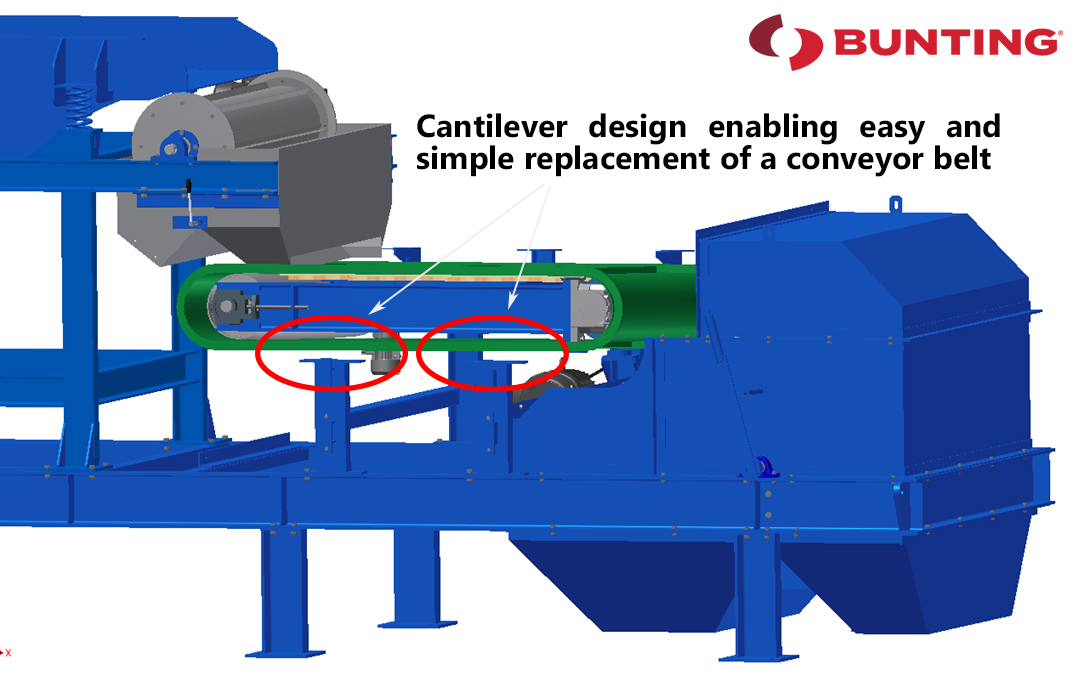
In many other designs, replacing the belt is time-consuming and involves the removal of the main eddy current rotor.
Models

Optional Extras
- Sequenced control cabinet
- Ceramic Coating on carbon fibre shell for enhanced protection of magnetic rotor
- A complete custom frame design with chutes for a metal separation module (Primary Magnetic Separator and Eddy Current Separator combined)
- Primary magnetic separators to remove ferrous materials, in the form of:
- A high-intensity drum magnet
- Pulley magnet
- Overband magnet
- Rotary or static belt cleaning brushes for use in applications where the product may be wet or sticky;
Applications
Eddy current separators are used to either recover non-ferrous metals for recycling (e.g. shredded cars, aluminium beverage cans from waste) or to cleanse a waste material of non-ferrous metals (e.g. cullet, plastics). Typical applications include:
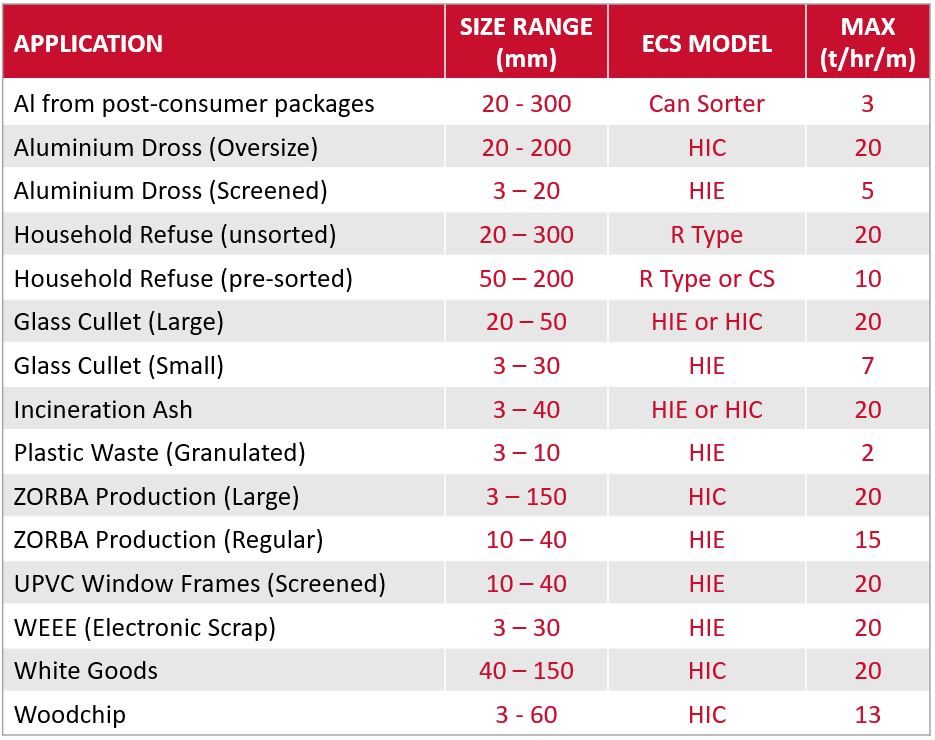
Note: All stated capacities are for indication purposes only. Specific capacities are subject to confirmation once an application has been reviewed or after laboratory tests.
Videos
